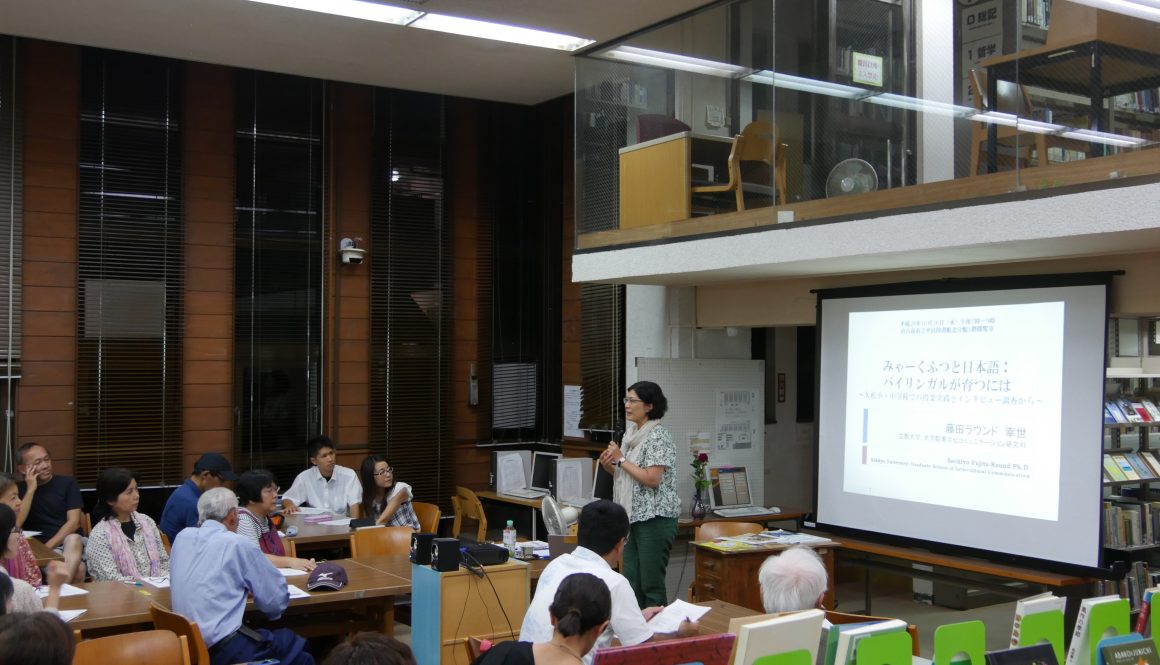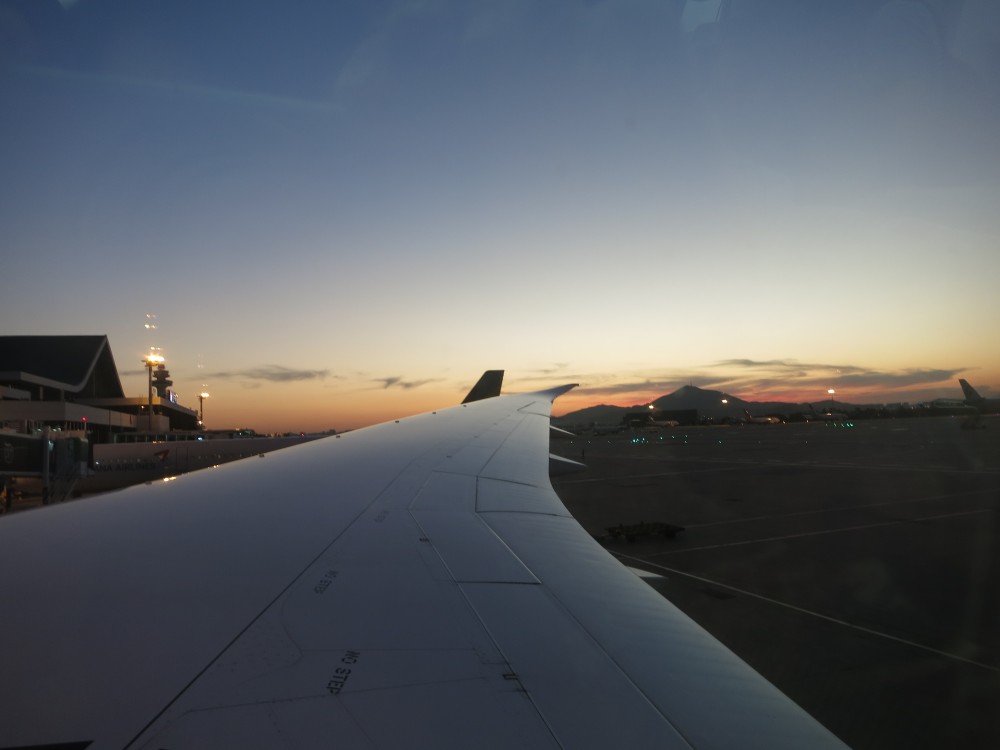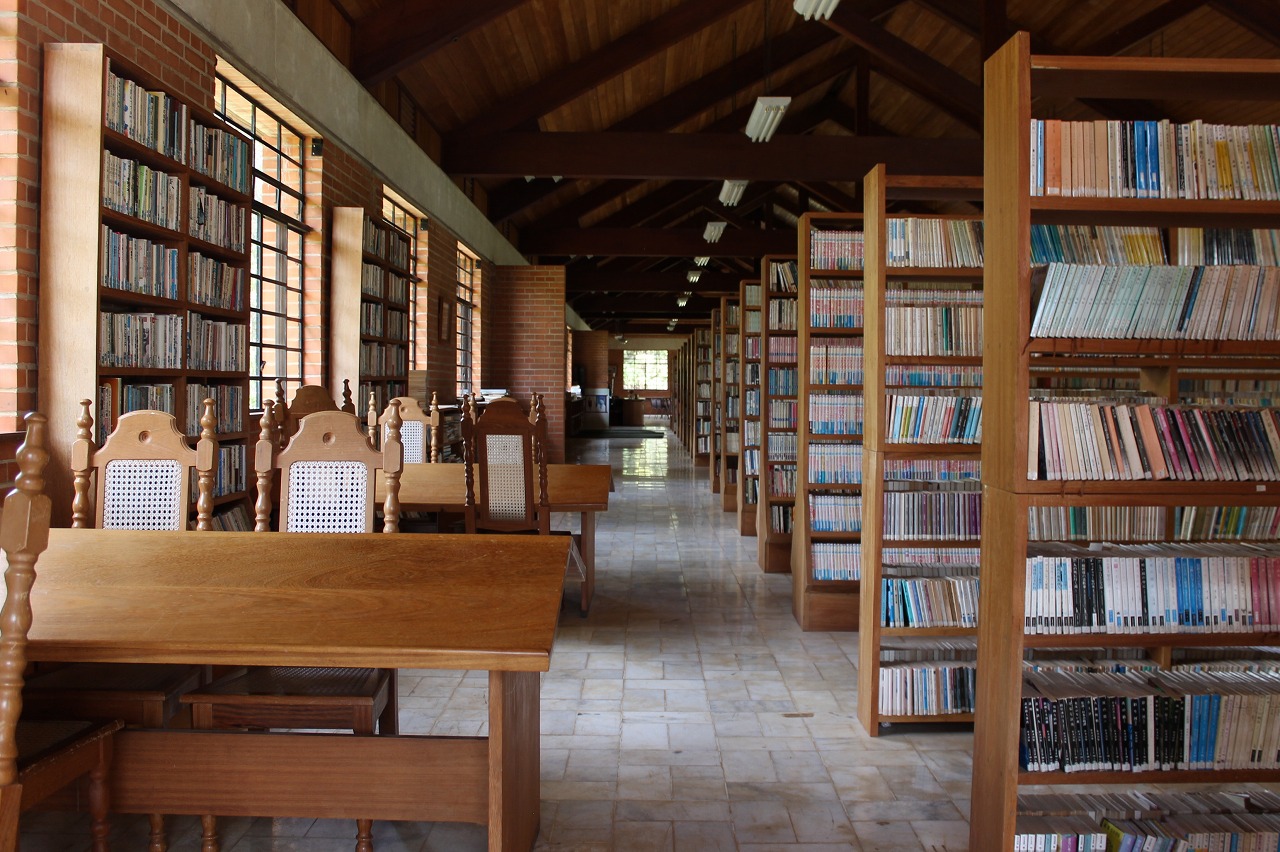How to Become Bilingual: Miyakoan and Japanese
On October 26th 2016, I did the second part of my seminar on “History and Culture of our Homeland” in Miyakojima-shi

On October 26th 2016, I did the second part of my seminar on “History and Culture of our Homeland” in Miyakojima-shi

完璧なバイリンガルを目指さなくとも、親や家族と話せる日本語が育つように、また、来年もお母さんたちや子どもたちの顔を見にいきたいですね。
The other day, my family gathered to celebrate my great grandfather’s birthday. My great grandfather is the first generation of the immigrants who went to Peru. We went to mass to commemorate my great grandfather’s birthday, and then we discussed about the life story of my great grandfather who travelled such a long distance. About 100 years ago, he crossed the ocean from Japan to Peru with only 100 dollars in his pocket. In a foreign land, he managed to end up running 3 different hair salons. We all talked about how hard it must have been for him since there were wars going on back then and a lot […]

今回は、那覇での危機言語財団の年次大会で演奏をしてくれた比嘉光龍(ふぃじゃ ばいろん)さんの歌声を少しだけ共有させてもらおうと思います。バイロンさんは、プロの琉球民謡の歌い手で、うちなあぐちを大学で教え、また、うちなあぐち、日本語、英語の多言語話者です。 In this blog, I would like to share the taste of Ryukyu traditional song by Byron Fija who played at the annual conference of Foundation for Endangered Languages in Naha. He is a professional musician of old traditional Ryukyu songs, he also teaches Uchinaa language (One of Ryukyu languages) at a university and is a multilingual of Uchinaa, Japanese and English. この動画は短いものですが、バイロンさんについては、NHKのテレビ番組でも紹介されています。 2014年10月4日(土)午後11時・【再放送】2014年10月11日(土)午前0時00分http://www.nhk.or.jp/etv21c/file/2014/1004.html This music clip is very short, but if you are interested he appears on a TV programme of NHK. Oct 4th, 2014, 11 p.m. and Oct 11th, 2014, 0 a.m. http://www.nhk.or.jp/etv21c/file/2014/1004.html バイロンさんの歌声と共に、琉球の伝統音楽やこうした伝統文化を支えている言語が危機に瀕しているということを心に留めたいと思います。 With Byron’s voice and song, I will rethink of the fact that this language […]

沖縄には、9月にしまくとぅば(島ことば)の日がある。2014年の今年は、琉球諸語の豊かさを改めてかみしめる節目となった。 There is a day which is called ‘Shimakutuba no hi (a day to use and remember old tongue/s of Ryukyu islands)’ in September. This year, 2014, is marked to acknowledge the diversity of Ryukyu languages. 危機言語のカテゴリーの中には、沖縄のことば(琉球諸語)も含まれている。今年は沖縄県内だけではなく、沖縄県を越えて、世界各国の危機言語の危機言語話者自身や危機言語に関わる国内外の研究者が現状報告をする二つの国際大会が東京と那覇においてあった。 In the category of endangered languages, the languages in Okinawa are included. Not only within Okinawa prefecture but beyond geographical Okinawa prefecture, there were two international conferences on the topic of endangered languages in the world in Tokyo and Naha, where the speakers and researchers of endangered languages exchanged the updated report. 9月13日には東京(学習院大学でリンガパックスのシンポジウムhttp://www.linguapax-asia.org/symposium-program.html?lang=ja)で、また、9月17-20日に那覇(沖縄国際大学等で危機言語財団による国際年次大会http://ryukyuans.org/new_program)が行われた。 There were two internationa conferences: on Sep 13 in Tokyo, at Gakushuin University, a symposium by Linguapax (http://www.linguapax-asia.org/symposium-program.html?lang=ja) and between Sep […]

国際基督教大学、東ヶ崎潔記念ダイアログハウス2階国際会議場で行った、「多文化共生を再考する―――学際的な視点から」の二日目です。 This is the report about the second day of the two-day mini-symposium at the International Christian University, Kiyoshi Togasaki Memorial Dialogue House 2nd Floor, International Conference Hall, titled “Rethinking ‘Tabunka (multicultural)’ and ‘Kyosei (co-existence)’—by the interdisciplinary perspectives”. この日のプログラムは以下の内容でした。The programme for the second day is as follows. <第二日目: 9月14日(日)Day 2: September 14th (Sunday) 13:00-16:30> 歴史と時間を軸に多文化・多言語のあり方を問い直す An inquiry into multicultural and multilingual being from the perspective of history and time 中牧弘允(吹田市立博物館館長、国立民族学博物館名誉教授) Hirochika NAKAMAKI (Director of Suita City Museum, Osaka and National Museum of Ethnology, Professor Emeritus) 文化人類学 Anthropology 「多文化共生に向けたコミュニティづくり―カレンダーにさぐる」Toward Socially Inclusive Multicultural Community — A Perspective from Ethnic Calendars John. C. MAHER (International Christian University, Professor and Director of IERS) ジョン・C・マーハ(国際基督教大学・教育研究所所長) 言語社会学・言語学 Sociology […]

There is a library with the biggest collection of books written in Japanese in all South America. Here, in Colonia Pinhal, you can find the library with the biggest collection of Japanese books in South America. As you enter the library, you can see the section of “Young Adults”. There are more than 70 thousand books neatly placed in bookshelves. And the books that aren’t organized…more than one can count. There are all second-hand books in Japanese. From children’s books and comics, novels and magazines, even illustrated encyclopaedias and historical documents. Most of the books are comics, some people call the Japanese book section “the manga section”. They have classic […]